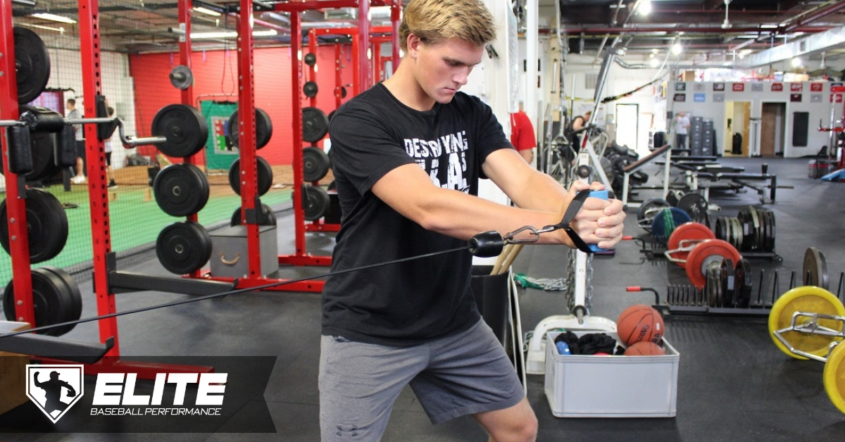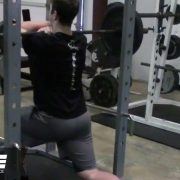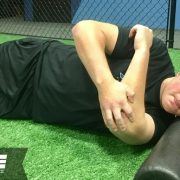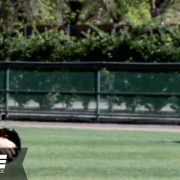4 Ways to Improve Your Command and Control in the Weight Room
Generally, when players start to struggle with throwing strikes, they’ve been conditioned to modify their mechanics. Many times, this is completely unnecessary.
Anatomy often tells us that in order to fix a “control” issue, strength and stability may need to be addressed before looking deeper into the situation.
Not long ago, I noticed a great tweet from Lantz Wheeler (from the Baseball Think Tank):
How important is stability of the hips/pelvis?
Imagine trying to text while jogging… would your message be clear?
Same holds true with movement… stability is the Pre-requisite for accurate/precise movement.
— BaseballThinkTank (@LantzWheeler) June 11, 2018
I found this to be one of the greatest external cues that I could use to get my point across to younger athletes struggling with throwing strikes.
It also prompted me to dive into this article on creating better “control” in the delivery through strength and stability.
But first, we should know the difference between command and control.
Command vs. Control
Even though they are similar, they’re not quite the same. These two skills are necessary for any pitcher who wants to elevate their game to the next level. But for today, we’re going to be talking about control. But first what’s the difference?
Control
To have control over one’s pitches means that a pitcher is able to throw strikes.
Not just out of the zone swings and misses either, but actual called strikes.
A pitcher needs to exhibit the ability to throw a fastball for a strike at any time during an at-bat, in other words “consistency”.
Command
Once a pitcher gains control over their pitches they must then move on to learning command.
Pitchers with good command have the talent to place their pitches anywhere they want within the strike zone. Not only can they just throw strikes, but good strikes.
This is more about how the ball is coming off your hand and how you’re locating the ball. I’ll leave that to our pitching coaches and Rapsodo.
Having better “control” means that your brain does a good job calling on the right muscles at the right time, and that you have the strength to maintain a stable platform to throw from.
So really, when we’re talking about control, we’re talking about becoming more stable, which is basically talking about getting stronger.
This brings us back to Lantz’s comment. When a pitcher lacks the ability (stability) to maintain pelvic position, it’s hard to make an efficient rotation at front foot strike, while still maintaining his driveline to the plate.
The outcome is usually missing high and arm side, in other words a lack of CONTROL.
A lack of strength and stability alters and creates less than optimal movement patterns. This in turn will create inconsistent throwing patterns and problems executing pitches as in throwing strikes (control).
“Don’t take mechanical solutions to athleticism problems. Before tinkering w/ mechanics, make sure a pitcher can jog to the mound w/out tripping.” – Eric Cressey
Many times, a pitching coach will spend hours working on arm slot mechanics when the athlete’s poor hip or core stability is the culprit.
This can lead to a lot of wasted time and frustration from both the player and the coach. Until these issues are fixed both will be banging their heads against the wall.
Now, let’s get into how we can create strength and stability in order to drive “control”.
Strength and Stability Drive Control
Train Single-Leg Strength
This helps create good, consistent ball and socket congruency (femur centered in the hip) at foot strike as well as a strong STABLE platform to throw from. Enter the Split Squat:
- Build single-leg strength,
- Improve flexibility in the trailing leg,
- Improve stability and control through the hip, knee and ankle, etc.
Improve Anterior and Rotary Core Strength and Stiffness
Next to the lower half, the core / rib cage positioning is probably the most important part of a pitching delivery.
It is at the center of the body and serves as a platform for the shoulder blades to move on, which in turn, dictates where the hand will be at ball release. It also gives us the stiffness needed to “hold” the upper body in place while the lower half starts to rotate.
I mean many young athletes can barely perform a plank correctly, let alone try to stabilize their core, while throwing a baseball as hard as they can.
Working on some good anterior core strength can be just what the doctor ordered. Oh yea, let’s throw in some serratus work while we’re at it to work on upward rotation as well.
(TRX Forearm Flutters)
Make Sure Your Program Includes Rotational Movements and Anti-Rotation Movements
Being able to control when your body rotates or preventing itself from rotating when it shouldn’t (think rolling an ankle or tweaking a knee), is a key part of ensuring you have good control and stability throughout your body.
An example of a rotational movement would be a wide stance cable rotation. An anti-rotation movement would be core stability at stride length.
(Core Stab at Stride Length)
Rotator Cuff Strength and Firing Time
The cuff has to be strong and timed up to center the humeral head (ball) on the glenoid fossa (socket) while the arm is accelerating.
Perturbations work great to help teach the smaller stabilizers to fire quicker and more efficiently rather than using the bigger prime movers such as the lat and deltoid.
Firing time of the cuff is just as important as cuff strength in regard to injury prevention.
(1/2 Kneeling Band Stabilizations)
Our goal here at RPP is to make sure movement quality and strength has been optimized to get improvements before even considering touching your mechanics.
But as always, every pitcher is different. Determine what the needs are first, and then prescribe the correct training effect from there.
See ya’ in the gym…
Nunzio Signore
Latest posts by Nunzio Signore (see all)
- 4 Ways to Improve Your Command and Control in the Weight Room - November 13, 2018
- How to Use the Weight Room for Baseball Pitching Mechanical Issues - August 7, 2018
- Combining Strength Training And Throwing Programs For Baseball Pitchers - March 27, 2018











Leave a Reply
Want to join the discussion?Feel free to contribute!